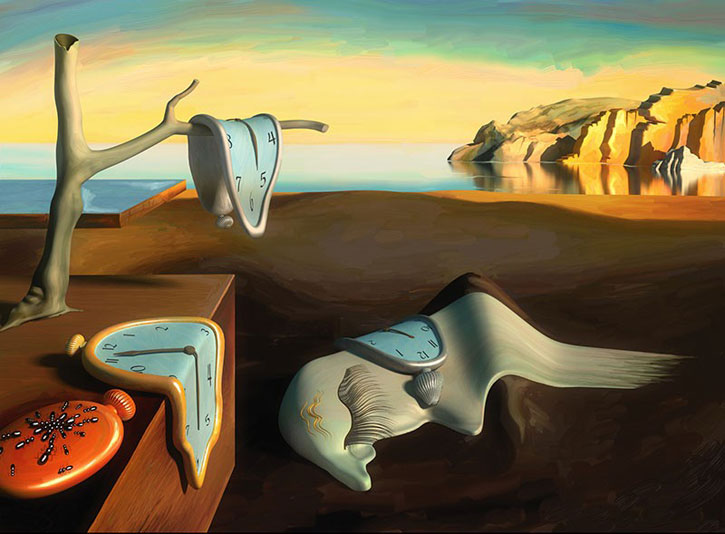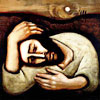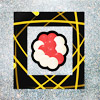Dream It, Do It
 by Rosemary Ann Guiley
by Rosemary Ann Guiley
Elias Howe is a Massachusetts textile expert, mechanic, and inventor. The year is 1846, and Howe has been working hard to perfect a machine that he knows will revolutionize industry: a sewing machine. There is only one major problem he cannot solve: how to work the thread with the needle.
Howe wonders whether or not to abandon his idea. Then one night he has a vivid and odd dream. He is in a jungle. The natives capture him and threaten to kill him if he can’t solve his sewing machine problem. He notices that their spears have holes in the tips.
Howe awakens in great excitement. He has the answer to his problem: put a hole in the needle and put the thread through it. The sewing machine is born, enabling clothing to be mass-produced at cheaper costs.
Howe is but one of a long list of inventors, artists, scientists, philosophers, architects, military commanders, and others who have had astonishing creative breakthroughs in dreams. Many of humankind’s greatest advancements and artistic creations have been fueled by nighttime visions. In fact, there is no subject or problem beyond the scope of what dreams can influence.
In ancient times inspirational dreams were believed to be given to humans by the gods. Sometimes the dreams would be in response to situations, and other times instructions came out of the blue.
The Greek philosopher Socrates, while he was in prison awaiting execution, had a recurring dream in which the same dream figure urged him to “set to work and make music.” The expression in Greek could refer to any creative art, but Socrates had definite ideas about his interpretation of it. He believed that he had been “making music” for years through his philosophy. He also believed that the dream was urging him to expand his creativity by writing poetry. During his final days, Socrates put Aesop’s fables to verse. “God has ordered me to do this, both through oracles and dreams and in all the other ways used by divine providence for giving its commands,” he stated.
Numerous examples in Greek literature show that people paid careful attention to instructional dreams and acted upon them. They often commemorated their dreams with a plaque, statue, or chapel, just as Thutmose IV did in ancient Egypt.
Today people still have inspirational dreams. The ideas and instructions in them can come from the dreamer, an authority figure, or even an animal. Sometimes there is no specific authority figure, but the dream has a clear message of instruction.
Here are some of the amazing influences dreams have had on history, science, and culture.
Music
Numerous composers, including Richard Wagner and Beethoven, dreamed some of their classical masterpieces. Mozart often woke up with entire compositions in his head, as though his dreams had organized everything while he slept. When he wrote the compositions down, they needed little revision.
More recently rock music has had dream influences as well. In 1965 Paul McCartney heard the melody for his famous Beatles song “Yesterday” in a dream. The dream was so vivid and the music seemed so familiar to him that at first he had to convince himself that he did not dream someone else’s music that he had heard and forgotten.
When rock musician Sting left his band, The Police, to embark on a solo career, he had a dream that literally shaped his first solo album. Sting had long acknowledged his use of dreams for song material. For his solo debut, he wished to strike out in a new direction, always risky for a successful artist whose fans usually want more of the same. Sting dreamed of being home in Hampshire, England, looking out over a walled and neat garden. Suddenly a group of rowdy and drunk blue turtles appeared through a hole in the wall and began doing acrobatics, tearing up the garden.
Upon reflecting on the dream, Sting saw the blue turtles as symbols of the subconscious and unrealized potential. Their destruction of the neat and manicured garden represented his desire to destroy preconceptions and expectations about his artistry. As a result, he reached deep within himself to produce the material for his debut album, titled, appropriately, The Dream of the Blue Turtles. Several songs became hit singles and the album sold more than three million copies.
Art
Artist and poet William Blake found dreams to be a continuing source of inspiration, as did Salvador Dali and other surrealist artists. Dali received so many ideas for his paintings from hypnagogic dreaming that he developed what he called the “slumber with key” technique and taught it to his students. The technique calls for placing a plate upside down in front of a comfortable armchair, and then settling into the chair for a nap while holding a heavy key between thumb and forefinger, poised over the plate. As one falls deeper into sleep, the key is released and hits the plate, causing awakening. This, said Dali, enables one to capture the dream before it is lost in deeper sleep.
The artist Jasper Johns created many paintings that were unremarkable, until 1954, when he dreamed of himself painting a large American flag. He painted the flag he saw in his dream, entitling it Flag. Afterward he became a sensation.
 Salvador Dali received artistic inspiration for surrealistic images like this one, Persistence of Memory,
Salvador Dali received artistic inspiration for surrealistic images like this one, Persistence of Memory,
from hypnagogic dreams, or abstract images that appear between consciousness and sleep.
Literature
Perhaps the most famous dream-inspired fiction is Frankenstein, written by Mary Wollstonecraft Shelley, the wife of poet Percy Bysshe Shelley. In 1816 the couple were guests, along with physician and writer John Polidori, of poet Lord Byron at his Swiss chalet. One rainy night, they entertained each other by telling ghost stories. Byron challenged everyone to write a horror story. That night Mary had a dream about a scientist who brought an artificial man to life.
The idea for the horror novel Dr. Jekyll and Mr. Hyde came to author Robert Louis Stevenson in a dream. At the time Stevenson was out of money and was desperate to sell a new work. For two days he had racked his brain for plot ideas, only to come up dry. On the second night he had a dream about a man, pursued for a crime, who took a powder to transform himself. Stevenson said later that he would often converse with “little people,” or brownies—a type of house fairy—when he was in a borderline state of sleep. They gave him so many ideas that he said he should question who was the real storyteller: him or them.
Horror author Stephen King gets many plot ideas from his dreams. He says that he uses dreams the way a person uses mirrors to see things that cannot be seen directly ahead. His dreams have enabled him to create a string of best-selling novels that have kept readers page-turning in suspense. Some of King’s dreams waited years to find their way into his books. A childhood nightmare of a hanged man who came horribly to life and grabbed at King became the inspiration many years later for his vampire novel Salem’s Lot.
Film And Television
Some filmmakers have lifted their dreams exactly as they had them into dream scenes in their films. Ingmar Bergman put his dream of four women in mourning in Cries and Whispers and a coffin dream in Wild Strawberries. Robert Altman’s Three Women was a story as he dreamed it, though it was not filmed as a dream.
Dan Curtis, a television producer, got the idea for his smash television soap opera, Dark Shadows, from a dream in 1965. In the dream he saw a young girl traveling on a train to a brooding mansion in New England. The dream was dark and edgy, with a sense of danger. It left a strong impression on Curtis, and soon he conceived of the wealthy but troubled Collins family, who lived in their mansion, Collinwood, and had a vampire relative named Barnabas Collins.
Science
In the late 1880s the chemist Friedrich A. Kekulé von Stradonitz made a revolutionary contribution to organic chemistry because of a dream. Kekulé had attempted without success to discover the structure of the benzene molecule. One night he had a dream in which atoms formed long snakelike chains. One snake grabbed its own tail and began to rotate. From this, Kekulé was able to create a model of a closed molecular ring. The symbol of the snake biting its own tail was unknown to him, but it is one of the most important symbols in Western alchemy. It is called the ouroboros, and it represents the unity of opposites, wholeness, oneness, and eternity.
Using Dreams For Guidance And Creativity
In many of the cases above, breakthrough dreams came in a stage of the creative process where the dreamer was stumped for ideas about how to move forward or solve a problem. It seems as though the waking mind had to get out of the way for the answer to be recognized.
People who pay attention to their dreams learn how to ask dreams for specific information rather than wait for inspired lightning to strike. While they sleep, their dreams mine rich fields of ideas. Sometimes the ideas are presented in dreams, and sometimes they are simply “known” to the dreamer upon awakening, or later in the day.
Inspired dreams speak in symbols just as ordinary dreams do. This is why it is important to do regular work with dreams to gain a good understanding of their language.
Take the case of an Indian dream psychologist, Anjali Hazarika, who conducted dream creativity workshops for petroleum engineers. A chemist in one of his groups was seeking to develop enzymes that would refine crude oil. Finally at a loss for ideas, he asked his dreams for help. He dreamed of standing on the side of a road while a big truck full of rotting cabbages went past. The stink was tremendous. At first, neither the chemist nor any of his associates could make sense of the dream. A few days later, the chemist was working in his laboratory when he realized that the bacteria produced by rotting cabbages broke down into the very enzymes what he needed. What was more, cabbages were exceptionally cheap.
How To Ask Your Dreams For Ideas And Answers
Dreams are an excellent way to access your intuition and get answers to questions that are in your best interests. Dreams sort through what you think you want versus what is best. Here is a simple process for asking your dreams for advice.
1. Choose an important matter and be open-minded about the answer.
2. Phrase a short, simple question you would like your dreams to answer.
For example:
- Should I (proposed action)
- How can I solve (problem)
- How can I improve my relationship with (name)
- Give me an idea for (project)
- Show me my path
3. Write the question in your dream journal.
4. Think about the question throughout the day.
5. At bedtime, write the question again, and instruct yourself to have and remember a dream that will answer the question.
6. Upon awakening, record whatever you have dreamed, even if it does not seem to answer the question.
7. Give extra attention to dream interpretation. Look for answers hidden in symbols.
8. Watch for more information that pops into your mind later.
9. If the answer still is not clear, try the process again. Try rephrasing the question.
Practice makes perfect with this process, so don’t give up too easily. If a while goes by and you feel your question remains unanswered, ask yourself if you are trying to get an answer you want, rather than what your dreams are really trying to tell you.
Explore Your Dreamscape
Over the course of time you will spend an average of one-third of your entire life asleep. That adds up to quite a few years, some of which will be spent dreaming. Make the most of your dream time by learning to understand the valuable messages your dreams give you. Take advantage of the opportunities dreams provide to enrich and improve your life. Dreams never lose their excitement and mystery. Enjoy your adventures!
Excerpt from Dreams And Astral Travel
Posted in Lucid Dreaming, Other Topics, Sleep Teachingwith comments disabled.





